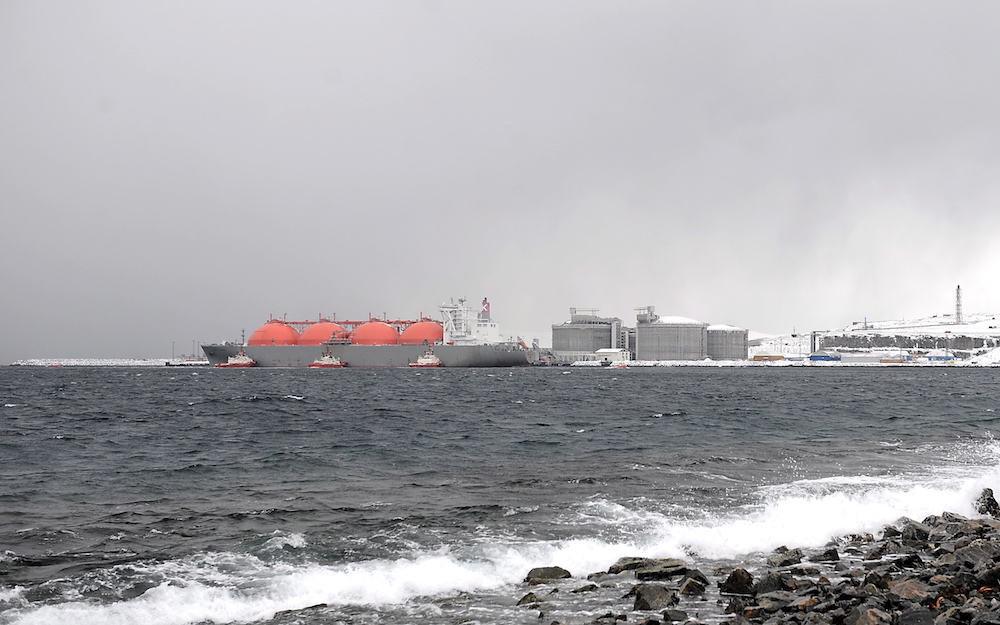Drill or no drill, Norway’s offshore future is shaping up to be carbon intensive
Norway got rich by taking fossil fuels out of the ground. Its future fortunes might be built on sending carbon dioxide the other way.

Norway’s Horisont Energi has applied to establish a carbon dioxide storage facility off the country’s northern coast that would be capable of holding twice the country’s annual emissions of greenhouse-gas pollution.
The announcement, made on Monday, comes after the oil and energy ministry said on Friday that it was offering two new offshore areas for companies interested in developing carbon dioxide storage facilities.
One of the areas is east of the Troll gas field, in the North Sea. The other, where Horisont Energi has applied to establish its facility, is located northeast of the Goliat oilfield, in the Barents Sea.
Horisont had announced in May that it was interested in developing the 100-million ton Polaris facility in the Barents Sea together with Equinor, the state-owned energy firm, as part the two firms’ Barents Blue project, which will produce ammonia.
[A green ammonium production plant could come to Norway’s Finnmark]
Long used in industrial applications as a coolant and in fertilizers, ammonia has recently emerged as a potential source of carbon-free fuel. Ideally, the ammonia used for fuel is created using hydrogen from water and nitrogen from the air in a process that does not release carbon dioxide. But ammonia can also be created from natural gas — though this produces carbon dioxide that must be stored if any there is to be any reduction in carbon pollution — and it is this process the Barents Blue facility plans to use.
“By capturing carbon dioxide during the production of ammonia and storing it safely under the seabed, we open a new and climate-friendly market for the large amounts of natural gas in the Barents Sea,” Bjørgulf Haukelidsæter Eidesen, Horisont Energi’s chief executive, said.
Applications to be granted permission to use the fields to store carbon dioxide are due in December, and a decision is expected at the end of 2022.
According to Eidsen, the estimated cost for both projects is 10 billion kroner ($1.16 billion).
[World’s largest plant capturing carbon from air starts in Iceland]
To date, few commercial carbon storage facilities are in operation, but the method has been widely touted by decision makers as perhaps the only way they can reach carbon-pollution targets. While that is a position that is backed by many scientists, conservationists warn that carbon storage is a crutch, since, they argue, it allows countries to drag their feet on making painful and ultimately necessary efforts to eliminate greenhouse-gas emissions.
The two areas unveiled last week are the latest to be identified as part of Norway’s 25-billion-kroner Longship national carbon capture and storage initiative. The first, which is due to come online in 2024 and will eventually have a capacity of 5 million tons of carbon dioxide, is being developed in the North Sea by a trio of firms that includes Equinor.
Equinor has reportedly also stored 26 million tons of carbon dioxide its Sleipner North Sea oil field and its Snøhvit Barents Sea gas field.
Norway has been drilling for oil and gas in the North Sea since 1966. Production expanded to the Barents Sea in 2007 and Oslo has been counting on the region developing into a lucrative province that would allow the country to remain an energy exporter after its North Sea resources are used up.
[Why the Barents Sea continues to attract oil investment, despite lackluster results]
While plans were already in the works to turn to carbon storage as a way to use empty oil and gas wells, disappointing results in the Barents Sea to date, combined with mounting public pressure for Norway to end drilling entirely, has the country thinking how it can continue to capitalize on its offshore resources and the investments that have been made in infrastructure and research.
In the run up to Monday’s general election, Tina Bru, the now-outgoing energy minister, described the decision to open up areas for carbon dioxide storage as part of what she called “continental shelf 2.0”, which, in addition to shifting the focus of the country’s offshore energy industry to renewables, also involves mining the seabed for minerals.
The interest in the carbon-storage areas, she said, “showed that it was feasible to build a new industry on the shoulders of something that was already there.”
[Greenland halts new oil exploration]
There is broad agreement among Norway’s political parties about the importance of carbon storage for the country.
Abeiderpartiet, or Labour Party, the social democratic party that received the largest share of the vote in Monday’s election, has proposed a tax reform to encourage investment in renewable energy and technology that can mitigate global warming, such as carbon storage.
The oil industry, however, makes up about 20 percent of the country’s economy — 40 percent, if related industries are included — and such measures could run counter to Abeiderpartiet’s election platform of job creation.
Senterpartiet and Sosialistisk Venstreparti, the two center-left parties with which Abeiderpartiet is likely to consider forming a coalition, both heavily support carbon-storage initiatives.